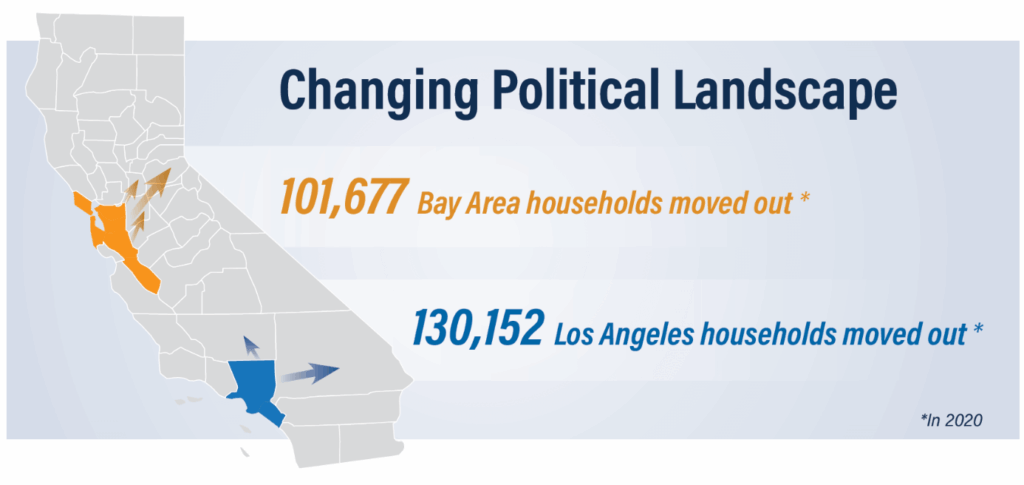
Welcome to Happening in California, a brief look at political news, insights, and analysis of the world’s fifth-largest economy.
Much has been said about California losing a Congressional seat for the first time in its history. In another first, California experienced a decline in population between January 2020 and January 2021 — losing more than 180,000 people.
However, the bigger story to pay attention to is the largest in-state migration of Californians from the coast to inland communities in its history.
Here is what is happening and why it is important …
Cheers,
Tom Ross | President and CEO | Swing Strategies
P.S. Share this page using the social icons on the page. Also you can share the link of this page and encourage friends to sign up using the form at the bottom of this page.
The Big Picture: In-state migration is shaking up California.

California has seen a drastic change in the distribution of its population in recent years, and the COVID-19 pandemic has only magnified this change.
Residents are escaping high-cost coastal communities and heading inland by the thousands, seeking less congestion and more affordable housing.

The migration from the coast to inland cities may provide new residents less expensive rent for now, but many of California’s fastest-growing land-locked counties are seeing surging rent prices due to the increase in population. The Inland Empire counties of San Bernardino and Riverside along with Fresno County in the Central Valley are popular destinations for those leaving the coast. Consequently, they are the three counties seeing the largest country-wide increase in rent since the pandemic began.
Longtime inland residents are feeling the impact of coastal newcomers driving up the price of rental housing. Conversely, some coastal counties have seen a slow stagnation of rent prices over the past year.
Additionally, the median home price in California is now more than $818,000 however in the Bay Area it is more than $1.27 million. The move from the coast to an inland area is often the only option for many aspiring homeowners. And now with the door open to remote work, many Californians are willing to undergo a longer, albeit less frequent commute. This further adds to the attractiveness of California’s growing inland communities.

While we are seeing an immediate effect of in-state migration contributing to rising housing costs, long-term impacts to the traditional political landscape could begin to appear in the coming years.
On December 27, California’s Independent Redistricting Commission will release the final legislative and congressional maps. This will provide a preview of how California’s political landscape will continue to evolve over the next decade.
Some of the effects are already clear. For example, California’s Inland Empire has grown faster than Los Angeles County in recent years. This wave of new residents is making the area’s legislative and congressional seats more competitive.
The Bottom Line: Despite the headline-grabbing stories of residents fleeing, California is still a promising place to live and work. In-state migration is spreading the wealth and human capital from the coast to inland communities — creating new opportunities in more regions throughout the state. The shakeup caused by California’s shifting population will have a significant impact on the state’s politics and economy. Stay tuned.